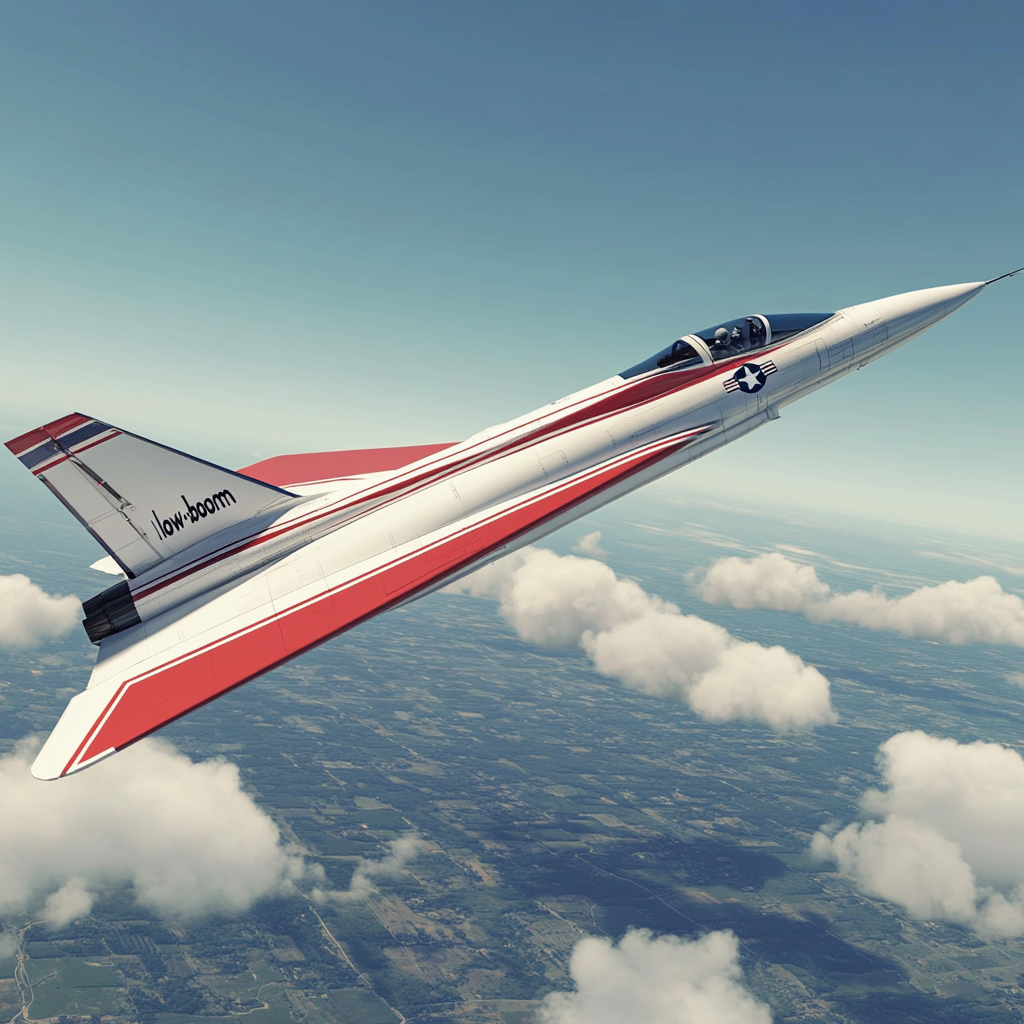
NASA’s X-59 Engine Ignites in Milestone Test Flight
In the bustling world of aerospace innovation, where dreams soar and engines roar, a stirring tale has emerged—one of audacious ambition and sonic breakthroughs. Buckle up, dear reader, because we’re about to take a delightful dive into the latest chapter of humanity's relentless pursuit of supersonic travel—the X-59 Quiet Supersonic Jet, a feather-light chariot embarked on a journey to silence the skies.
First, let’s set the stage. Imagine this: a sleek, slender aircraft, stretching 99.7 feet long, its frame an astounding engineering marvel crafted by the wizards at Lockheed Martin’s Skunk Works. This isn’t just any aircraft; it's a supersonic jet determined to break the sound barrier without the ear-splitting booms traditionally accompanying such endeavors. Commercial supersonic flights vanished from our skies in 1973, but now, the X-59 is revving engines like a futuristic phoenix rising from the ashes of aviation history.
On an unforgettable day—October 30, 2024—the X-59 team lit the fire of ingenuity, kicking off its engine testing at Lockheed Martin's Palmdale, California facility. There’s a palpable excitement in the air, akin to the thrill of a rock concert, where the first chord strikes and the audience holds its breath in anticipation. This was no mere ignition; it signified the dawn of a new ‘quiet’ era in flight. They first cranked up the engine at low speeds to test the waters, or in this case, the air—checking for leaks, listening for anomalies, and ensuring that every system was humming along perfectly. A low-key warm-up, if you will, before the grand symphony begins.
Now, let’s chat about the heartbeat of this remarkable jet—its engine. The X-59 is armed with a modified F414-GE-100 engine, a beast capable of roaring with 22,000 pounds of thrust. Its placement atop the aircraft marks a strategic decision aimed at reducing noise pollution, a testament to the brilliance of engineering and environmental consciousness. With this power source, the X-59 is ready to cruise at a speed of Mach 1.4, equivalent to a thrilling 925 mph at 55,000 feet up—think of it as the elegant gazelle of the skies.
But wait—what’s that about a “low boom”? Ah, the pièce de résistance! The X-59 introduces revolutionary low-boom technology, transforming the thunderous sonic booms of yesteryear into a gentle “sonic thump.” Picture a delightful tap on the shoulder instead of a full-blown shove. As the aircraft slices through the air, it’s engineered to produce sound levels that barely tickle your eardrums at under 75 perceived dB—far quieter than the nostalgic any classics like the Concorde which rattled windows with a booming 100-110 dB. Talk about a peace treaty between speed and serenity!
As we marvel at this engineering wonder, it’s essential to keep an eye on the future. The X-59 airplane is set to embark on a series of intricate tests that will pave the way toward its maiden flight, anticipated to take place in the dawning months of 2025. The excitement is bubbling as preparations are underway for an array of evaluations, including Aluminum Bird Tests—this isn’t just a whimsical title, but a crucial simulation to gather hard-hitting data about the aircraft's performance under different conditions. Talk about flying with data!
Taxi tests will follow, serving as a precursor to its airborne debut—presumably with all systems functional and working in concert, like a well-rehearsed orchestra. The X-59 team is poised, eager to ensure everything is in place before the first leap into the sky takes place.
What’s the bigger picture here? The implications of the X-59 extend far beyond its own sleek frame. Results from this experimental aircraft will serve as invaluable data to regulators and policymakers alike. NASA plans an intriguing experiment, flying the X-59 over various U.S. cities to gauge public perception of the new sonic thump. Gather around, it’s like a live music testing gig! By collecting real-world reactions and acoustic data, they are laying the groundwork to potentially lift the ban on commercial supersonic flights over land. Yes, it's a daring hope, but so was landing on the moon, right?
Jay Brandon, the X-59 Chief Engineer, captures the spirit of this journey, noting, “The first phase of the engine tests was really a warmup…” Indeed, it’s all about the buildup, the anticipation, and the promise of what’s to come, akin to the crescendo in an exhilarating symphony. And Paul Dees, NASA’s Deputy Propulsion Lead for the X-59, eloquently adds, “It’s like the first note of a symphony…” A perfect way to describe the tension between past and future that makes our hearts race.
As we gaze toward this exciting horizon, one can't help but reflect on the significance of moments like the successful engine test of the X-59. It’s not just an achievement within the realm of aerospace; it’s a keystone piece of innovation that could redefine how we traverse vast geographies. So hold onto your hats, because we’re on the brink of revolutionizing not only how we fly, but what flying means in the modern world.
So, if you feel compelled by the thrill of aviation advancements and the prospects that lie ahead, why not take a moment to soar through the latest updates? Want to stay up to date with the latest news on neural networks and automation? Subscribe to our Telegram channel: @channel_neirotoken. 🛩️

